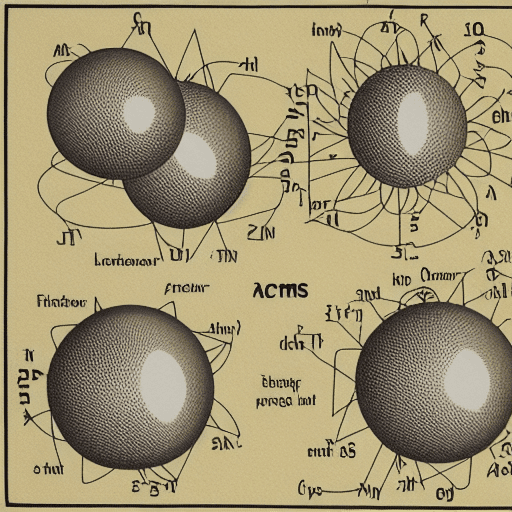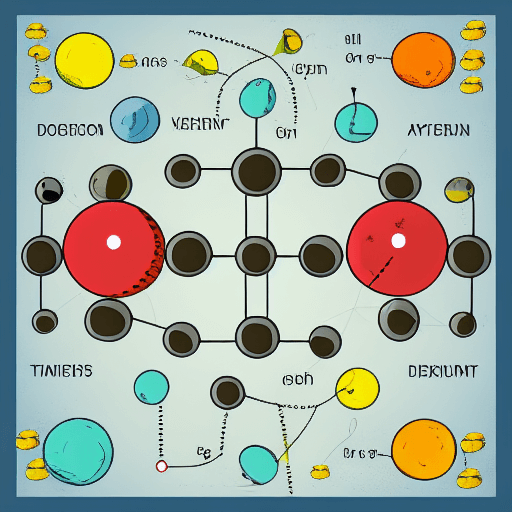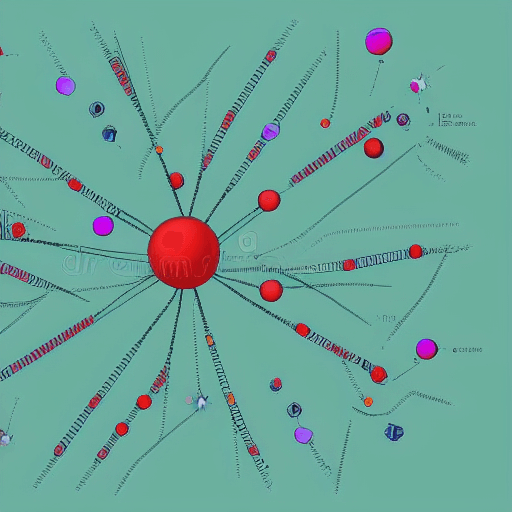Where is most of the mass of an atom located?
Let’s discuss where the majority of an atom’s mass is located.
We will also talk about the different theories that have been proposed to answer this question.

The majority of the mass of an atom is located in its nucleus.
The nucleus contains protons and neutrons, which are held together by nuclear forces. The electrons orbit around the nucleus in shells.
What is the mass of an atom?
The mass of an atom is the total amount of protons and neutrons in the nucleus.
The number of protons defines what element the atom is, while the number of neutrons can vary to create isotopes.
The mass of an atom is usually measured in daltons (Da) or unified atomic mass units (u).
- One dalton is approximately equal to the mass of a proton or neutron, while one unified atomic mass unit is approximately equal to one-twelfth the mass of an atom of carbon-12.
- The mass of an atom can also be expressed as a proportion of the atomic mass unit, with most atoms having a mass that falls between 1 and 3 u.
- Atoms can have different masses depending on their isotopes, with heavier isotopes tending to be less stable than lighter ones.
The most common isotopes are hydrogen-1 (1H), carbon-12 (12C), nitrogen-14 (14N), and oxygen-16 (16O).

The average atomic mass of an element is calculated by taking into account the natural abundance of each isotope.
For example, the average atomic mass of oxygen is 16.00 u, because oxygen typically consists of three isotopes: 16O (99.76%), 17O (0.04%), and 18O (0.20%).
Where is most of the mass of an atom located?
The vast majority of the mass of an atom is located in its nucleus.
This extremely small and dense region contains protons and neutrons, which are collectively known as nucleons.

- The number of nucleons in an atom’s nucleus determines the element that it is.
- For example, atoms with one proton in their nucleus are hydrogen atoms, while atoms with 92 protons are uranium atoms.
- The electrons that orbit the nucleus make up a very small fraction of an atom’s total mass.
- In fact, the ratio of the mass of an electron to the mass of a proton is about 1:1836.
As a result, although electrons play a vital role in determining the properties of an atom, they contribute very little to its overall mass.
Theories about where the majority of an atom’s mass is located
For years, scientists have been trying to determine where the majority of an atom’s mass is located.

There are three main theories:
- That it is located in the nucleus
- That it is evenly distributed throughout the atom
- That it is concentrated in the electron cloud
Each theory has its own merits, and there is still no consensus on which one is correct.
The most widely accepted theory is that the majority of an atom’s mass is located in the nucleus. This theory is supported by the fact that the nucleus contains protons, which are much heavier than electrons.
However, some scientists argue that the majority of an atom’s mass is actually evenly distributed throughout the atom.
This theory is based on the fact that electrons have a negative charge, and therefore they should Cancel out the positive charge of the protons.
Ultimately, the jury is still out on where the majority of an atom’s mass is located.
However, each of these theories has helped to further our understanding of atoms and their structure.
Why is the majority of an atom’s mass located in its nucleus?
The vast majority of an atom’s mass is located in its nucleus.
This is because the nucleus contains protons, which are incredibly heavy particles.
In fact, a proton has a mass that is about 1836 times greater than that of an electron.
Consequently, the presence of protons in the nucleus gives atoms most of their mass.
Additionally, the nucleus also contains neutrons, which are also quite heavy particles.
Neutrons have a mass that is slightly less than that of protons, but they still contribute significantly to the mass of an atom.
Thus, it is the combination of protons and neutrons in the nucleus that makes it the heaviest part of an atom.
How do we know where most of the atom’s mass is located?
In order to determine where most of an atom’s mass is located, scientists use a technique called spectroscopy.
By studying the way atoms interact with light, they are able to infer the distribution of mass within an atom.
This evidence suggests that most of an atom’s mass is concentrated in the nucleus, with only a small amount in the orbiting electrons.
How does nuclear force hold the nucleus together?
The nuclear force is one of the four fundamental forces of nature, along with gravity, electromagnetism, and strong force.
It is responsible for holding the nucleus of an atom together.
The nuclear force is a short-range force, meaning that it only operates over a small distance.
Its strength decreases rapidly as the distance between particles increases.
This is why the nuclear force can only hold together the relatively small nucleus of an atom and not the larger atom as a whole.
The nuclear force is also attractive, meaning that it pulls particles together. This is what gives atoms their stability.
The nuclear force is mediated by particles called bosons. These particles are exchanged between the nucleons (protons and neutrons) in order to create the force.
The exchange of bosons also allows for the formation of composite particles, such as atoms and molecules.
Therefore, the majority of the mass of an atom is located in its nucleus, with only a small amount in the orbiting electrons.
Article Sources
Jacks of Science sources the most authoritative, trustworthy, and highly recognized institutions for our article research. Learn more about our Editorial Teams process and diligence in verifying the accuracy of every article we publish.
